Dog owners often choose breeds for their looks, temperament, or energy levels—but intelligence plays a powerful role too. A dog’s ability to think, learn, and respond can shape not only training but also the bond between pet and owner. Studies have shown that breeds vary widely in social cognition, problem-solving, and self-control, making some stand out as true canine geniuses.
On average, dogs are thought to match the intelligence of a toddler, yet certain breeds consistently rise above the pack. From Stanley Coren’s classic research to modern behavioral studies, the world has recognized dogs that can quickly learn commands, solve problems creatively, and even anticipate human needs. Their brilliance is often what makes them excel as working companions.
Across history, smart dogs have served as herders, guardians, search-and-rescue partners, and therapy helpers. Their intelligence doesn’t just make them easier to train—it makes them indispensable allies to humans. These breeds have been carefully shaped over generations, blending loyalty with remarkable brainpower, and proving that a dog’s mind can be just as impressive as its heart.
Smartest Working Dog Breeds Across History
From ancient battlefields to modern rescue missions, these are the smartest dogs whose tireless work became legendary.
1. Border Collie
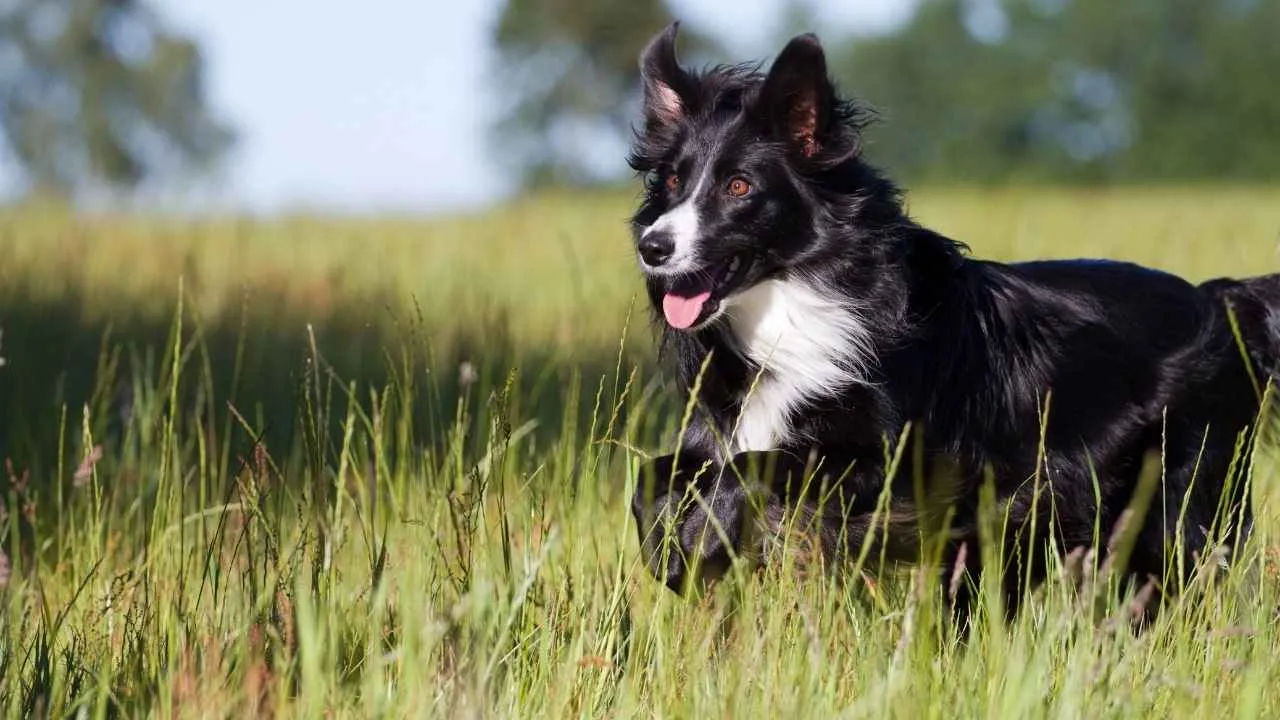
History & Origin
The Border Collie’s roots trace back to the rocky highlands of Scotland and Wales, where Roman herding dogs crossed with Viking spitzes to create a smaller, more agile breed.
Their unmatched herding style—marked by stealth, sweeping runs, and the famous “herding eye”—quickly earned them the title of the world’s greatest herders. Recognized by the AKC in 1995, Border Collies remain icons of canine intelligence and work ethic across history.
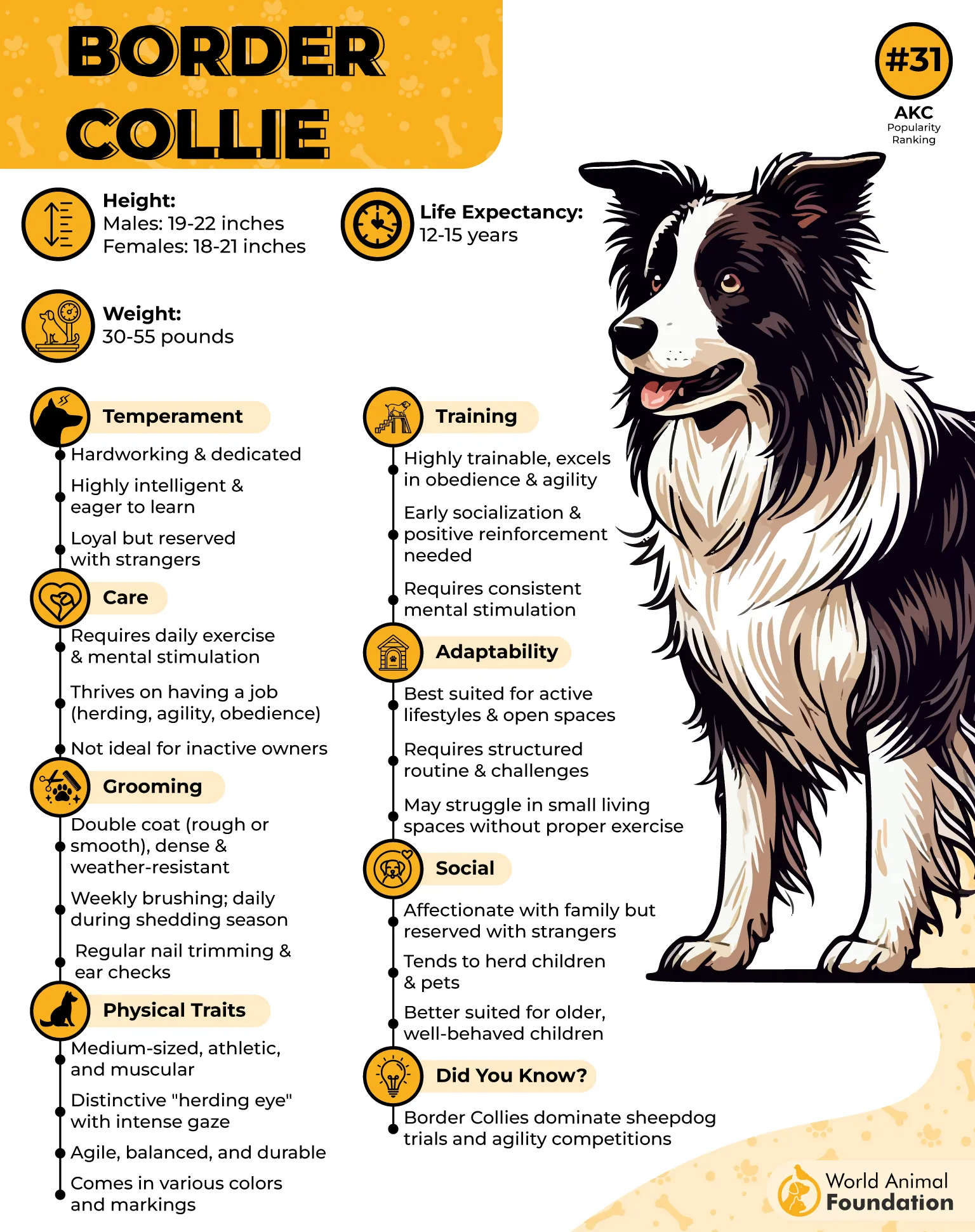
Personality & Intelligence
Often called canine workaholics, Border Collies thrive on mental and physical challenges. They’re remarkably intelligent, quick to learn, and even capable of recognizing hundreds of words.
While affectionate with family, they can be reserved with strangers and sometimes channel their herding instinct toward children or pets. Without enough stimulation, they may grow restless or destructive.
Working Traits
Master herders, using focused eye contact and bursts of energy to control livestock
Excel in agility, obedience, and search-and-rescue work
Highly trainable, with problem-solving skills and advanced memory
Thrive when given consistent jobs or challenges
Known as one of the smartest dog breeds in the world
2. German Shepherd

Origins & Background
The German Shepherd was first developed in late 19th-century Germany as the ultimate herding dog breed. Their agility, intelligence, and trainability quickly expanded their roles beyond farms, leading them to become one of the most versatile working breeds in the world, as per PetMD.
Today, they’re celebrated for their service in the military, police, and rescue operations, cementing their reputation as dependable partners to humans.
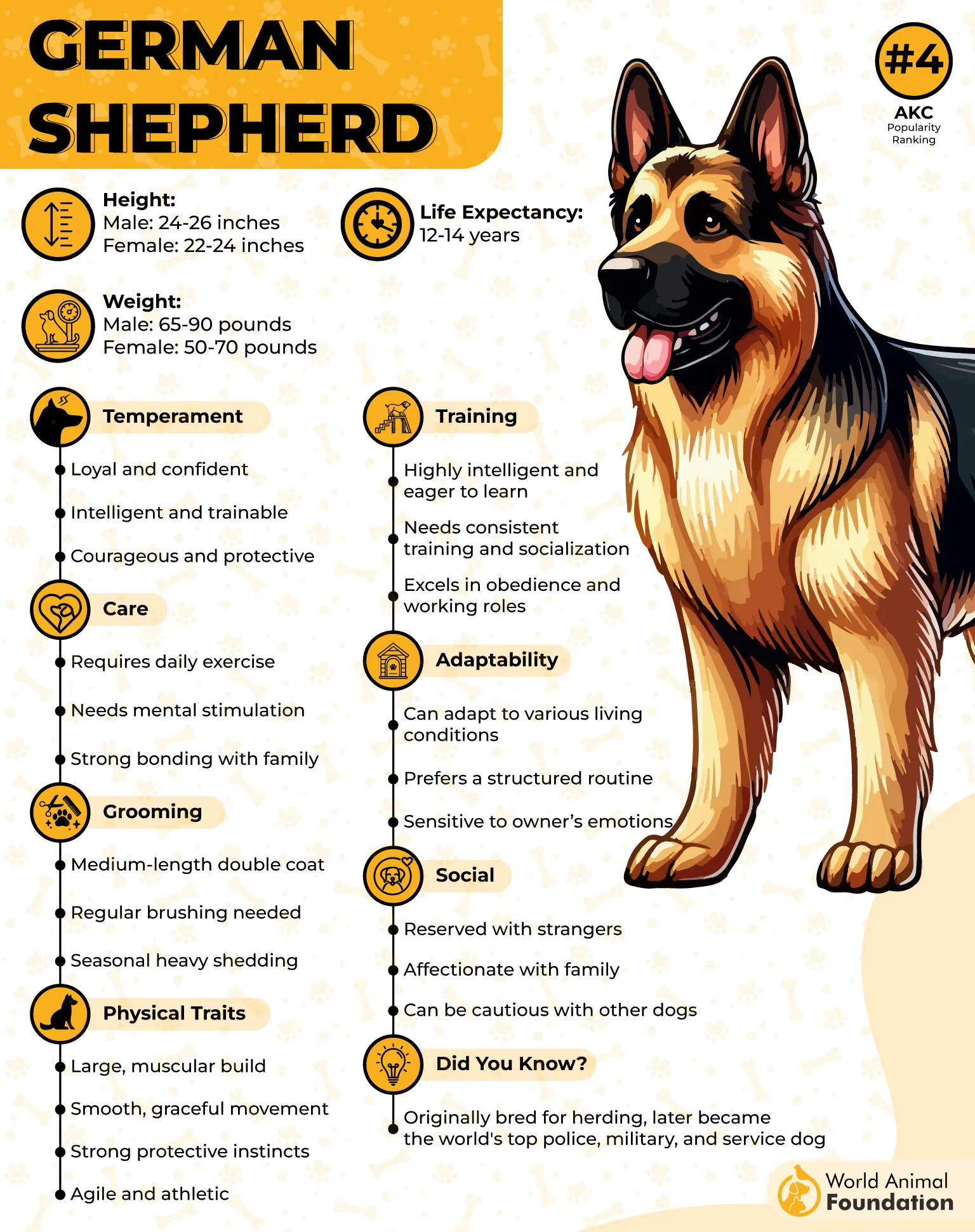
Temperament & Mental Ability
Known for their loyalty and courage, German Shepherds form deep bonds with their families. Their intelligence makes them eager learners, especially when training involves consistency, positive reinforcement, and structured challenges.
With proper socialization, they grow into confident, well-mannered companions who thrive when given purpose and responsibility.
Key Working Roles
Trusted service dogs in police, military, and security units
Highly effective in search-and-rescue operations
Natural guardians with strong protective instincts
Originally bred for herding and farm work
Adapt well to advanced obedience and sport training
3. Doberman Pinscher

Breed Origins
The Doberman Pinscher was developed in Germany around 1890 by Karl Friedrich Louis Dobermann, a tax collector who needed a fearless protector, as per Britannica.
Bred from a mix of working dogs, including German Pinschers and possibly Rottweilers, the Doberman quickly gained a reputation as one of the most reliable guard and military dogs in history. Its sleek build, powerful muscles, and unmatched alertness made it a natural choice for protection and companionship.
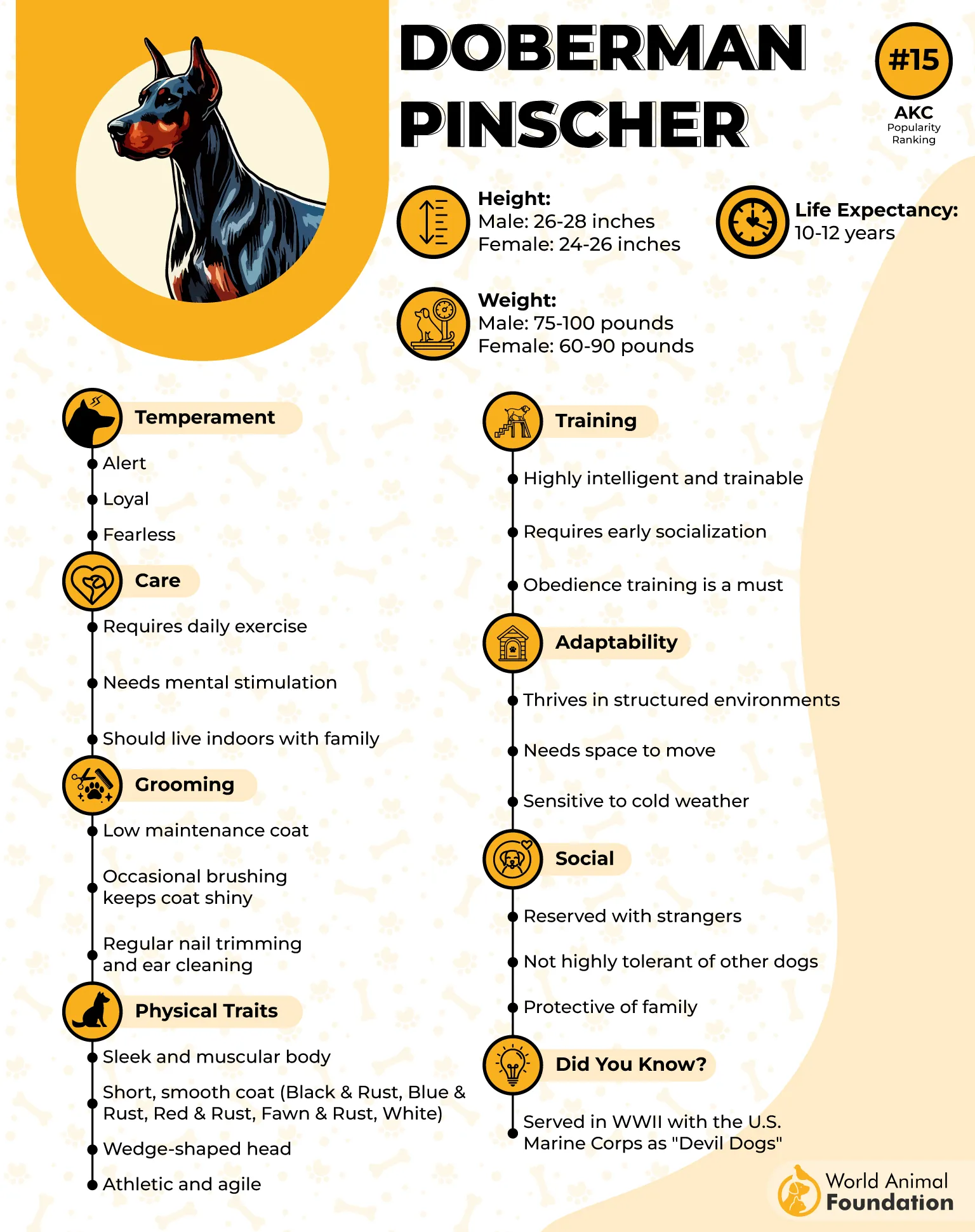
Nature & Intelligence
Dobermans are bold yet sensitive, striking a balance between loyalty and vigilance. They form deep attachments with their families and are surprisingly affectionate despite their reputation as fierce protectors.
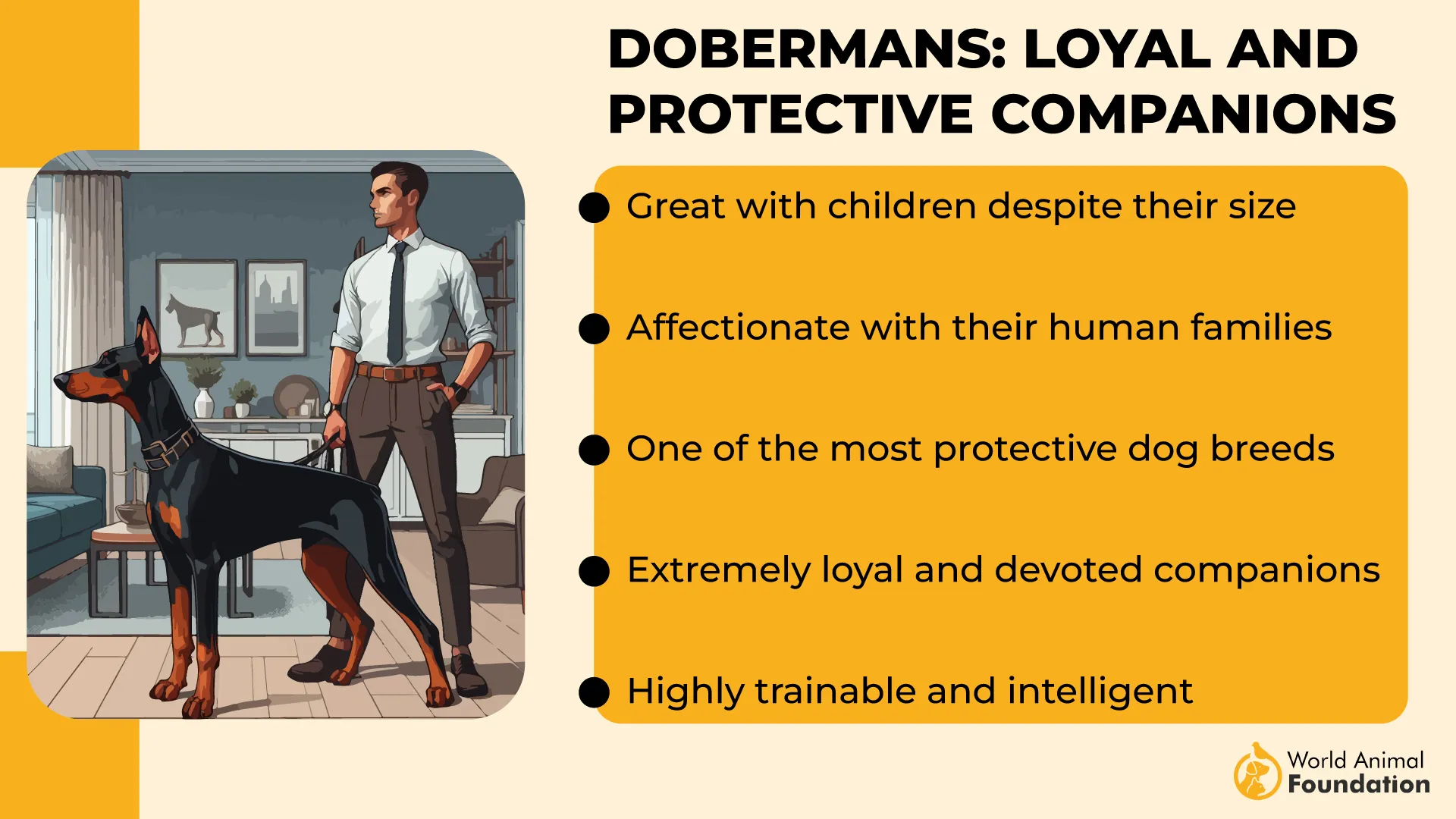
Highly intelligent and eager to learn, they excel in obedience and advanced training. Their confidence and sharp instincts make them excellent guardians, though they require strong, consistent leadership.
Working Strengths
Highly regarded as military and police dogs
Exceptional guard dogs with natural protective instincts
Quick learners, able to master complex commands
Vigilant watchdogs, alert yet not overly vocal
Agile athletes, excelling in obedience and protection sports
4. Rottweiler

Historical Roots
The Rottweiler is among the oldest known working breeds, tracing back to the mastiffs that accompanied Roman legions through Europe.
These powerful dogs drove cattle and guarded soldiers’ camps, later settling in the German town of Rottweil, where they developed into the breed we recognize today. Their heritage as drovers and protectors shaped their confidence, strength, and loyalty.
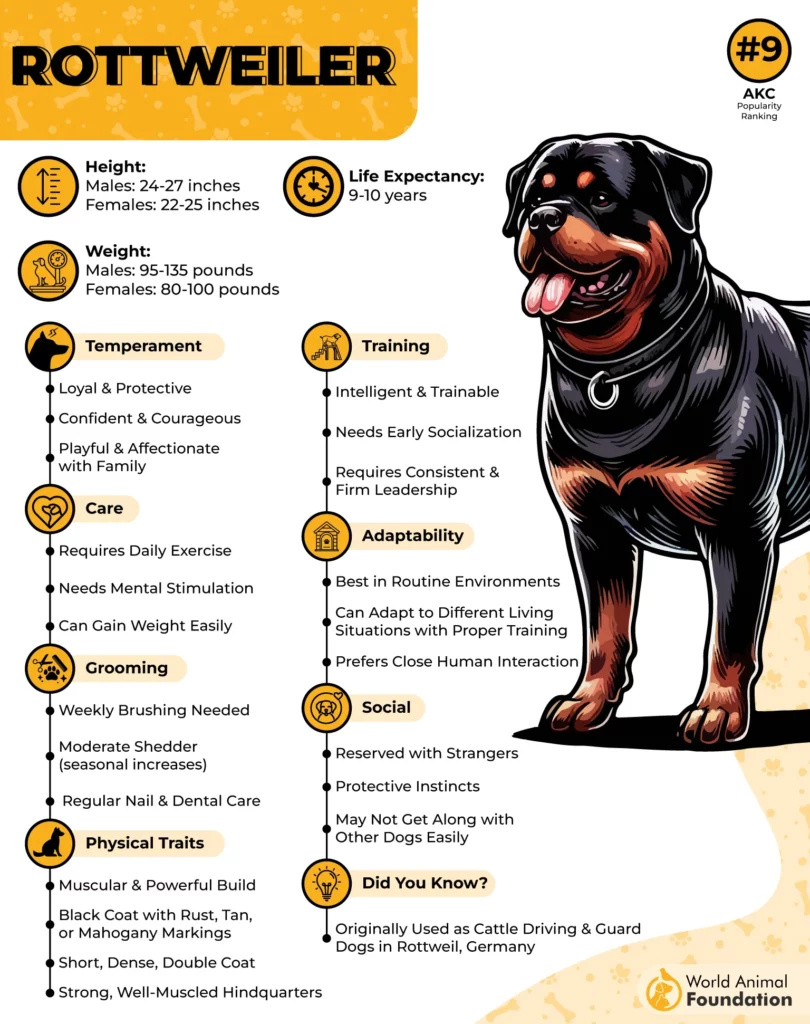
Disposition & Trainability
Rottweilers are intelligent, self-assured, and affectionate with their families, though some individuals are more reserved, while others are playful and clownish. With their protective nature, early and consistent socialization is essential.
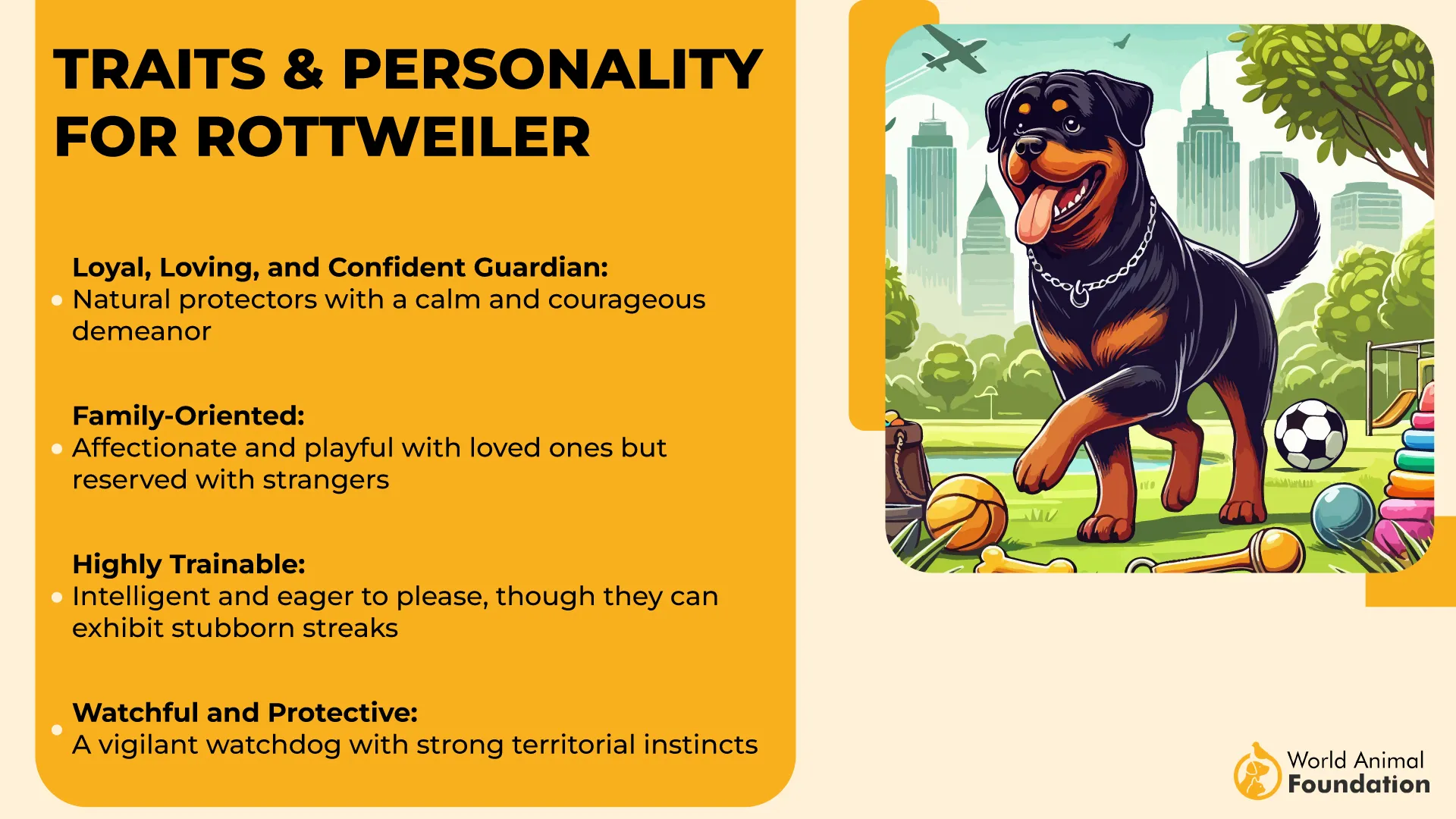
They learn quickly and respond best to positive reinforcement methods, thriving when given structure and purpose. Their courage and independence require steady guidance, making them better suited for experienced owners.
Notable Working Roles
Historically used to herd cattle and guard property
Trusted protection and security dogs
Compete successfully in obedience, herding, and weight-pulling sports
Serve as popular police dogs and military dogs in modern times
Strong guardians with unwavering loyalty to their families
5. Golden Retriever
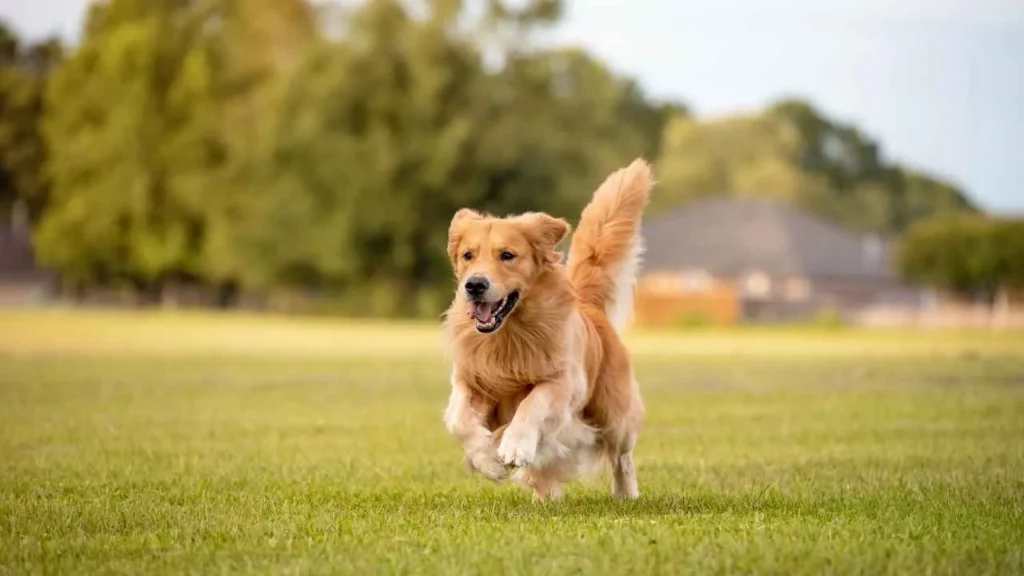
Ancestry & Development
The Golden Retriever was first bred in the 19th century at Lord Tweedmouth’s Guisachan estate in Scotland. By crossing a yellow retriever named Nous with a Tweed Water Spaniel and later introducing breeds like Labrador Retrievers, Red Setters, and Bloodhounds, Lord Tweedmouth created a versatile gundog with a golden coat and excellent retrieving instincts, as per PDSA.
Officially recognized in 1920, the Golden Retriever has since become one of the most beloved and recognizable breeds worldwide.
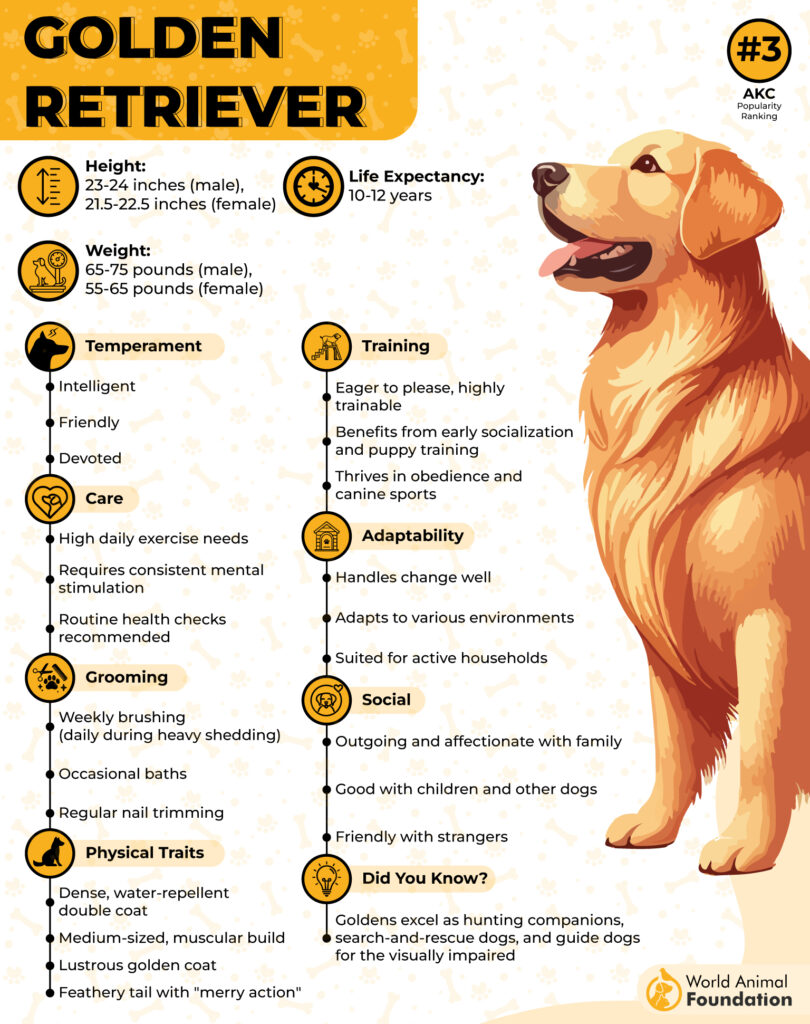
Disposition & Trainability
Known for their affectionate, gentle, and playful nature, Goldens are adored as family companions. They thrive on human connection, often eager to please and easy to train.
Their tolerant and patient personality makes them suitable for both experienced and first-time owners. While they lack guarding instincts, their friendliness and loyalty ensure they’re always close to their families.
Working Roles & Skills
Skilled hunting and retrieving dogs, especially for waterfowl
Trusted service animals, including guide dogs for the blind
Valued in search-and-rescue operations worldwide
Excel in obedience, agility, and therapy dog work
Natural swimmers with a strong love for water activities
6. Labrador Retriever

Origins & Breed History
The Labrador Retriever originated in Newfoundland in the early 19th century, where fishermen used a smaller water dog known as the St. John’s dog for retrieving nets and fish, according to Hill’s Pet.
These dogs were later brought to England, where breeders refined them—likely by crossing with Flat-coated Retrievers—into the Labrador we know today.

Recognized officially in the early 1900s, the breed quickly gained fame for its versatility, resilience, and friendly temperament. Today, Labradors are among the most recognizable and popular dog breeds worldwide.
Temperament & Behavior
Labradors are energetic, loyal, and endlessly affectionate dog breeds. Known for their intelligence and eagerness to please, they are highly trainable; however, their youthful exuberance can sometimes make them a handful in their early years.
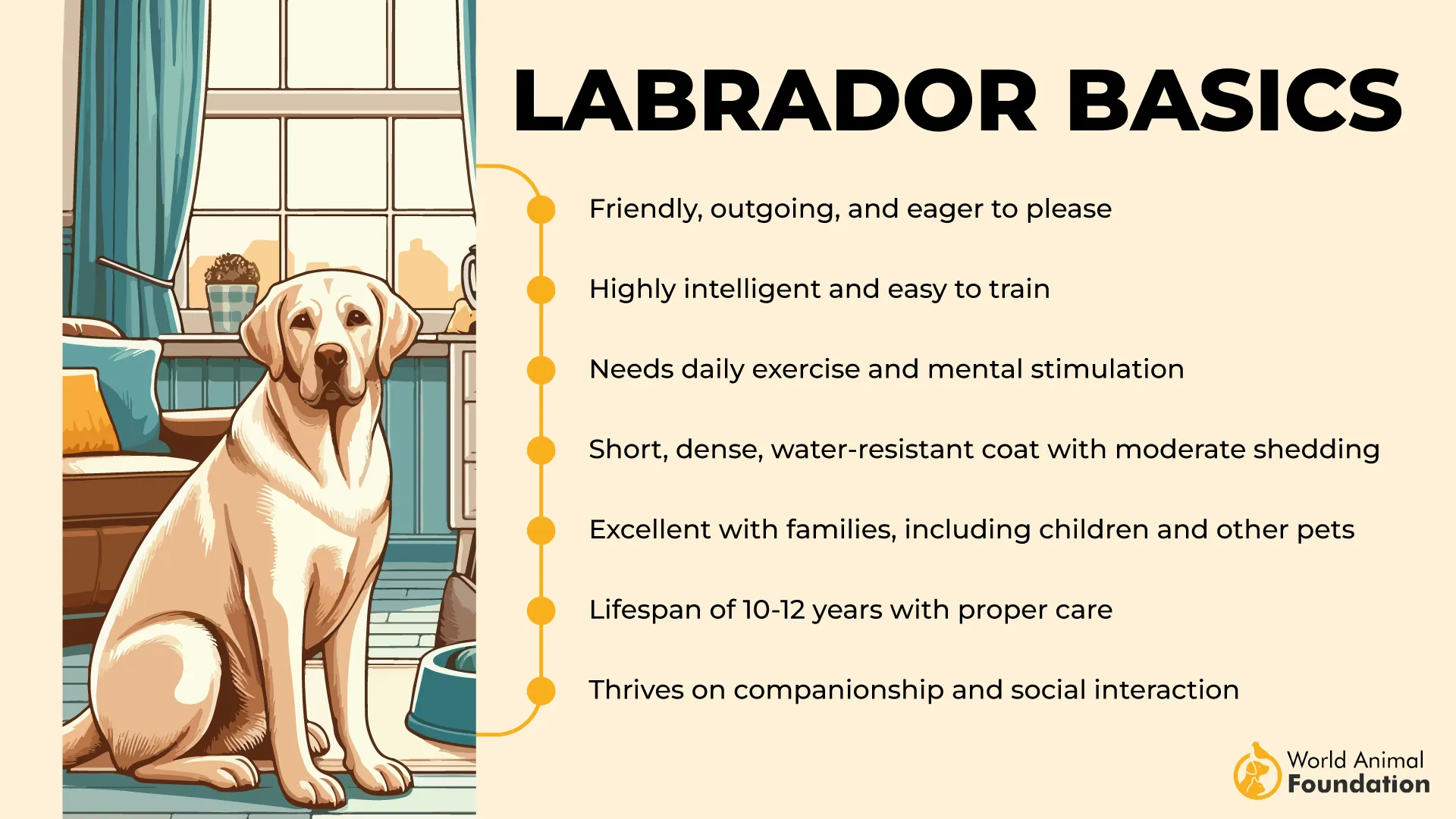
They are gentle with children, sociable with other pets, and thrive in active households. While not natural guard dogs, their outgoing, trustworthy nature ensures they fit seamlessly into family life.
Abilities & Notable Roles
Exceptional gun dogs, bred for waterfowl retrieval in cold conditions
Among the most common guide dogs for the blind
Frequently used in search-and-rescue and detection work (explosives, narcotics)
Excel in obedience, agility, and therapy programs
Strong swimmers with a love of water and retrieving games
7. Belgian Malinois

Origins & Breed History
The Belgian Malinois was first bred in the northwestern city of Malines, Belgium, as one of four distinct herding breeds sharing Belgian bloodlines. WebMD notes that these dogs were bred to herd cattle and sheep; they quickly became valued for their stamina, intelligence, and devotion to work.
They were officially introduced to the United States in 1911 and registered as a distinct breed by the AKC in 1959. While their popularity declined during World War II due to limited imports, the Malinois has since become one of the most respected working breeds worldwide.
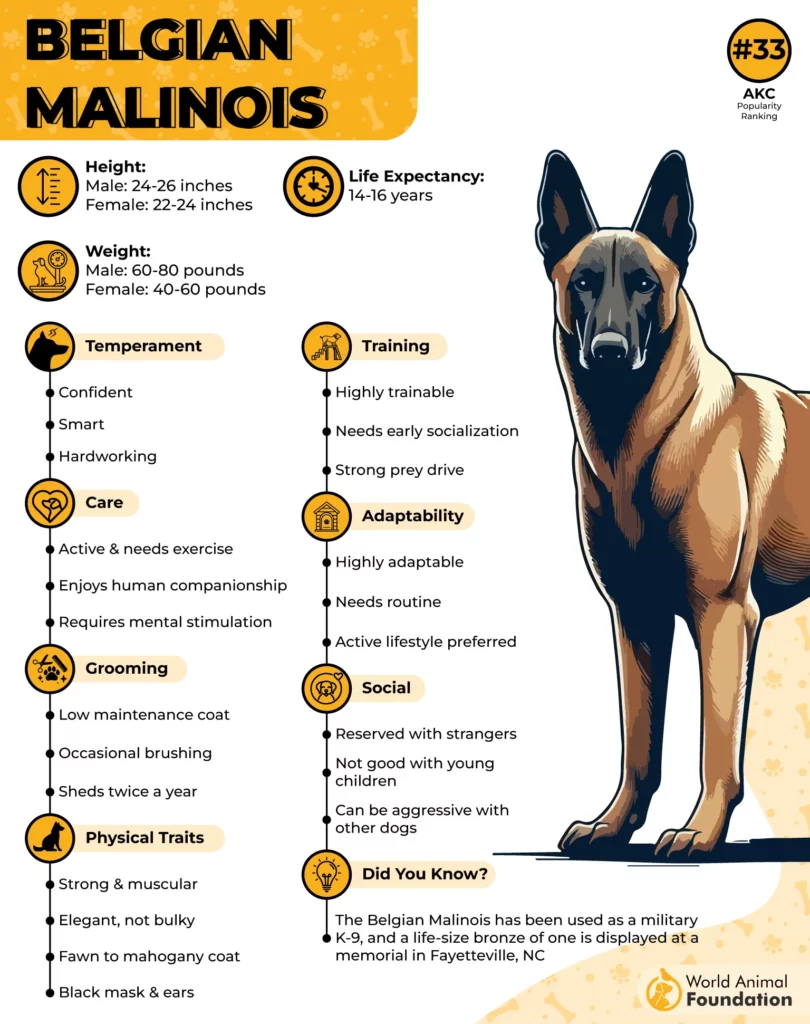
Temperament & Behavior
Belgian Malinois are loyal, energetic, and people-oriented dogs who form deep bonds with their families. Highly intelligent and eager to please, they thrive in structured environments where they can learn, work, and stay active.
Known for their protective instincts, they require consistent socialization from puppyhood to avoid over-guarding or developing fearful behaviors. With the right training, they are playful, affectionate companions who balance their working spirit with a strong desire for human connection.
Abilities & Working Roles
Exceptional herding dogs, originally bred for cattle and sheep management
Trusted law enforcement partners in tracking, detection, and apprehension
Military working dogs used in search-and-rescue and tactical missions
Top performers in obedience, agility, and protection sports
Loyal family protectors when well-socialized and properly trained
Conclusion
The smartest dog breeds throughout history have demonstrated to humans just how remarkable dog intelligence can be. From herding dogs like the Border Collie to hunting dogs such as the Labrador Retriever and Golden Retriever, these breeds were originally bred for specific tasks but have become some of the most popular dog breeds worldwide.
Dog experts, including Stanley Coren, have ranked the brightest dogs based on their problem-solving abilities, working intelligence, and capacity to learn new commands. German Shepherds, Doberman Pinschers, and Shetland Sheepdogs stand out as versatile dogs that excel as police dogs, therapy dogs, and service dogs, proving their value far beyond their herding group or hunting roots.
For dog owners, it’s clear that the smartest breeds thrive with proper training, mental stimulation, and plenty of activity. Whether large or small dogs, their exceptional intelligence, boundless energy, and deep connection with humans make them more than companions—they are true partners across generations.


